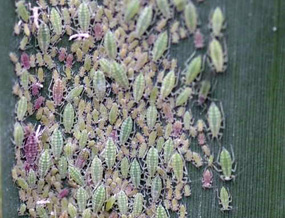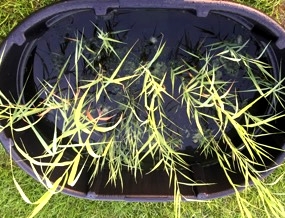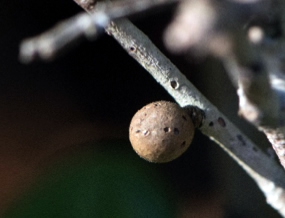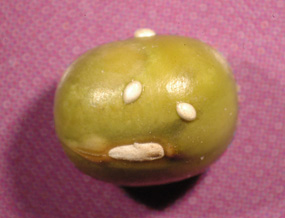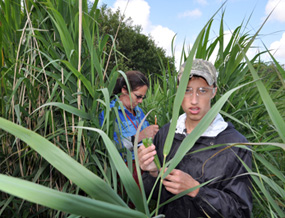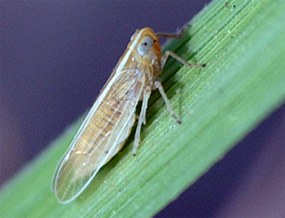Roseau cane (Phragmites australis) Dieback
in the Mississippi River Delta
The effects of environmental stressors and Phragmites lineage on plant functional traits, including above and belowground biomass
We conducted an experiment at Innovation Park to examine the effects of scale insects, inundation, fertilization and lineage on Phragmites biomass production over the course of one growing season. We used potted plants from three source populations of each Phragmites lineage (Gulf, Delta, EU=European invasive) and placed them in cattle tanks subjected to a low or high water treatment (Fig. 1). Plants were treated to two fertilizer levels and the presence/absence of scale insects.
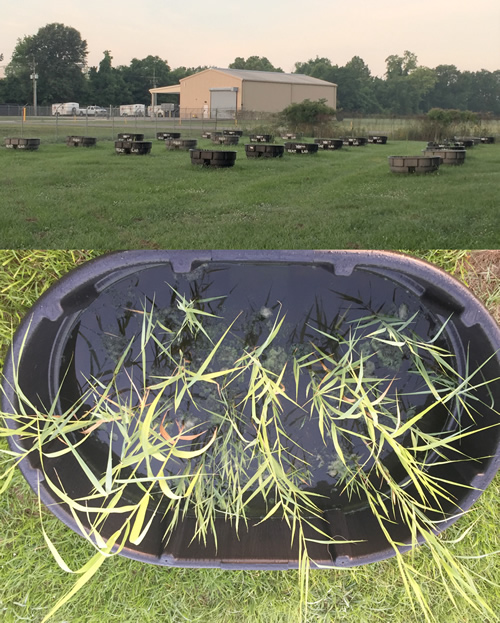
Results of this study were published in Cronin et al. (2020) and only a brief summary is provided here. Scale abundance was 41% lower in high water and decreased 2.7 fold as fertilization increased. Also, EU had 1.5–2.6 times fewer scales than Gulf, but had similar scale abundance to Delta. Impacts of scales, water depth and fertilizer on plant biomass depended strongly on lineage. Scales reduced biomass of Delta, EU and Gulf by 38%, 32% and 10%, respectively (Fig. 2). In comparison, biomass was 30% higher for EU, 46% lower for Gulf and unchanged for Delta in high versus low water. Finally, at high fertilization levels, Gulf produced 57% more biomass than EU. Owing to its greater tolerance to scales and high water, we concluded that EU may be more suitable for use in restoration of the MRD (but see below).
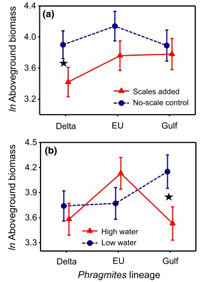
In a related paper, Knight et al. (2020) conducted a common-garden experiment to examine the effects of salinity and scale insects on the three Phragmites lineages. Here, we found that scale densities were up to 7 times greater on the Delta compared to the EU lineage. Scale infestation resulted in 22%– 39% reductions in the proportion of stems with green leaf tissue for all lineages, and 12% reduction in stem heights for Delta. Salinity was detrimental to all lineages, reducing stem heights by 20% compared to freshwater.
Together, these studies suggest that the roseau cane scale can cause die-back symptoms similar to what is observed in the MRD and that the Delta lineage was more negatively affected than the EU lineage.
